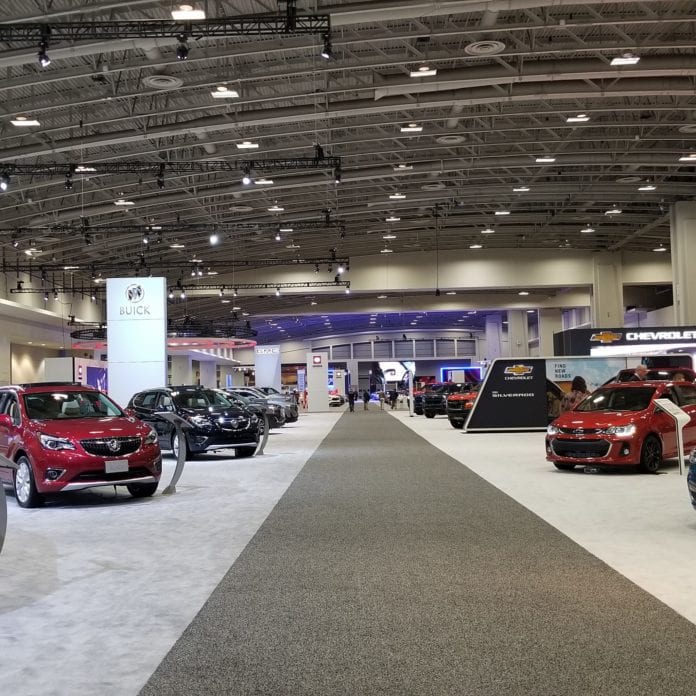At Washington Auto Show, talk of DSRC and 5.9 GHz
WASHINGTON, D.C.—As the Federal Communications Commission mulls a technology shift at 5.9 GHz in favor of unlicensed use and cellular vehicle-to-everything for automotive connectivity, the automotive industry still wants to hang on to the full 75 meghertz of spectrum, citing concerns about capacity and the need to prioritize automotive safety-related communications from interference in the band.
Speaking at the Washington Auto Show’s policy days last week, FCC Commissioner Michael O’Rielly made it

clear that he felt the automotive industry had had its chance to take advantage of the swath of spectrum set aside for intelligent transportation services using Dedicated Short Range Communications, or DSRC. That spectrum was allocated for automotive safety use in 1999 and has been almost completely undeployed, although there are some test networks in places such as Ann Arbor, Michigan. The use of cellular vehicle-to-everything (C-V2X) technology, radar and other wireless technologies have since eclipsed DSRC.
Even that previously DSRC-focused Ann Arbor testbed (which covers 27 square miles) announced in last month that it has begun simultaneous testing of both DSRC and cellular vehicle-to-everything.
“There was a lot of opportunity for success, and it didn’t happen,” O’Rielly said, going on to add that frustration with the lack of DSRC development as well as the “dire need” for more unlicensed spectrum prompted the FCC to reconsider the use of the band.
O’Rielly said that he would like to see a final decision on the allocation of the 5.9 GHz band later this year, perhaps in the summer—but the timing will be up to Chairman Ajit Pai.
Pai commented in a recent statement on a C-V2X project of Audi, Qualcomm and the Virginia Department of Transportation—which was also announced at the Washington Auto Show —that the deployment plans were only possible via an experimental license, because the band is still currently allocated for DSRC use.
“The FCC recognizes the promise of C-V2X, having voted unanimously in December on a proposal to designate 20 megahertz for its deployment in the 5.9 GHz band. If this proposal is adopted, it would be a significant step forward for automotive safety, since there is currently no spectrum designated for C-V2X. Americans on the move would be the beneficiaries—but only if the FCC takes action and leaves the failed status quo behind,” Pai said.
In a panel at the Washington Auto Show, David Liu, head of regulatory safety affairs for American Honda Motor Company, called the FCC’s proposal for the band “problematic.” He said that in his view, the use of the band for automotive communications to ensure road safety was more important than “the convenience provided by a trivial amount of additional Wi-Fi spectrum” and expressed concern that as the intelligent vehicle ecosystem evolves to 5G, the choice of what technology to use will become an issue if less of the 5.9 GHz band is available for automotive.
In its NPRM, the FCC said that “the promise of ubiquitous vehicle-to-vehicle and vehicle-to-infrastructure communications in this band has never materialized, while vehicle manufacturers increasingly are using a multitude of other radio frequency based and other technologies to deliver tangible safety benefits.”
The FCC has proposed repurposing the band into two parts: the upper 30 megahertz for transportation and vehicle safety purposes, including the use of DSRC and C-V2X, and the lower 45 megahertz for unlicensed use. Specifically, the plan would call for the upper 20 megahertz of the band to be used for C-V2X and the commission asked for comment on whether to use the remaining 10 megahertz for DSRC or dedicate it to C-V2X.

